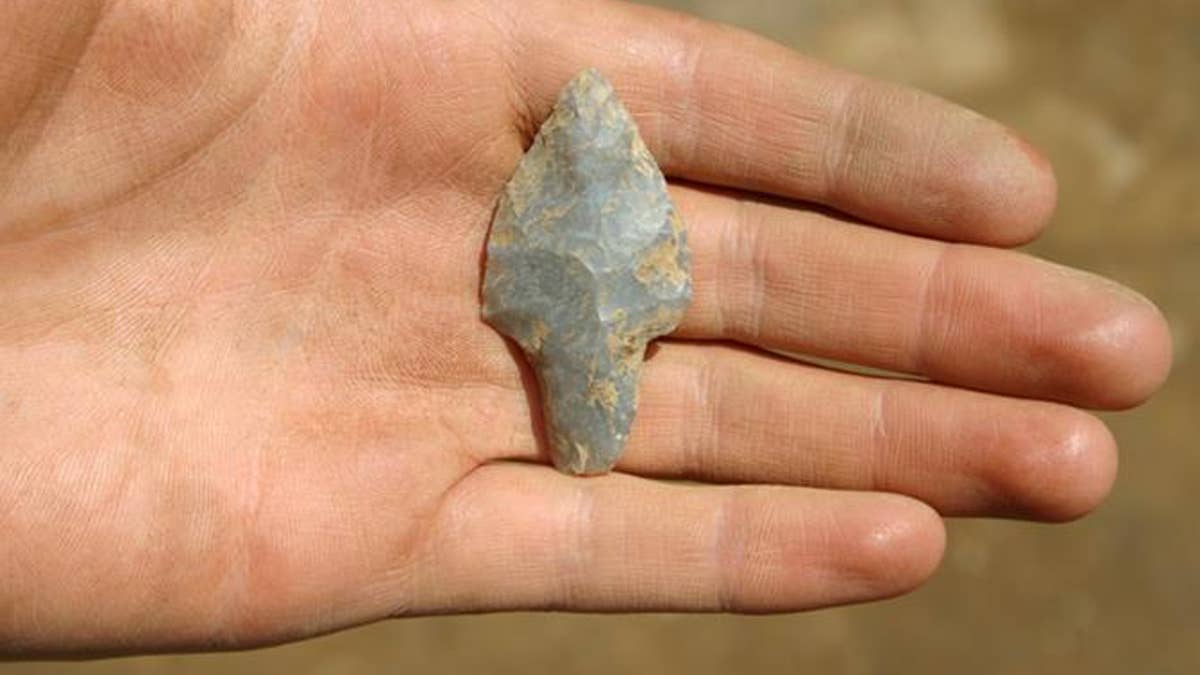
This spear tip is just one of the many artifacts discovered at the Heckelman site. (Brian Redmond)
Native Americans in Northern Ohio constructed a detailed ceremonial site 2,300 years ago that may have been used to celebrate life and observe the cosmos, according to archaeologists who spent five years excavating there.
The archaeologists, from the Cleveland Museum of Natural History, the University of Toledo and the Firelands Archaeological Research Center in Amherst, uncovered the ceremonial site within the Heckelman excavation site, located on a hilltop near the Huron River outside Milan, Ohio.
The area’s Early Woodland occupiers built the ceremonial site in 300 B.C. in an oval enclosure dug into the ground within a larger enclosure, the archaeologists said. Excavators unearthed circular post molds, or organic stains in the soil, that suggest freestanding wooden posts or ritual poles arranged in clusters were once located there, and that they were not part of any structure or building.
Related: Youngest Egyptian mummified fetus identified in British museum
It is believed that the poles, between 10 and 20 inches in diameter and likely 10 to 12 feet high, were set in the ground and then taken down after the ceremonies.
“What’s interesting,” said Dr. Brian Redmond, curator of archaeology at the Cleveland Museum of Natural History, is that “… they weren’t performing what you call mortuary rituals, or rituals related to burial of the dead. We found no burials at that site at that time period.”
“The Heckelman site is unlike anything found in the lower Great Lakes of the United States,” Redmond said. “Most contemporary sites in Ohio focused on burial ceremonies and the building of mounds. To find evidence of life celebrations is an unexpected and exciting discovery. It gives us surprising insights about these prehistoric Ohioans that lived nearly 2,300 years ago.”
Related: Bookstore finds rare Napoleonic War journal hidden in storage cabinet
The archaeologists also discovered hundreds of artifacts, including pottery, food remains, spear tips, flint knives and stone tools at the Heckelman site, which was occupied by four different groups of Native Americans before European settlers arrived: the Early Woodland group in 300 B.C., the Middle Woodland in 200 A.D., the Late Woodland in 600 A.D. and the Late Prehistoric in 1400 A.D.
Redmond’s paper on the archaeologists’ findings, “Connecting Heaven and Earth: Interpreting Early Woodland Nonmortuary Ceremonialism in Northern Ohio,” was published earlier this year in the Midcontinental Journal of Archaeology.
